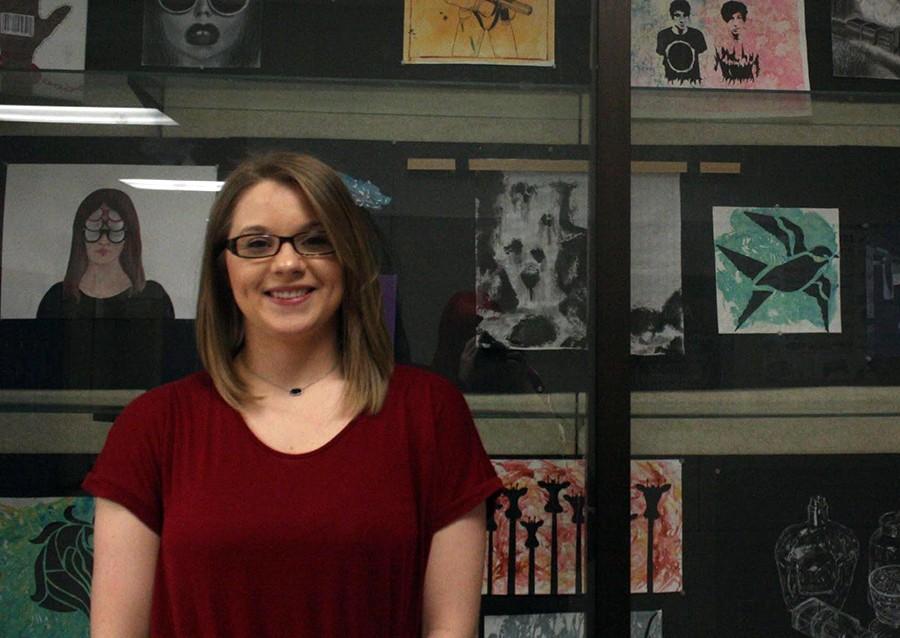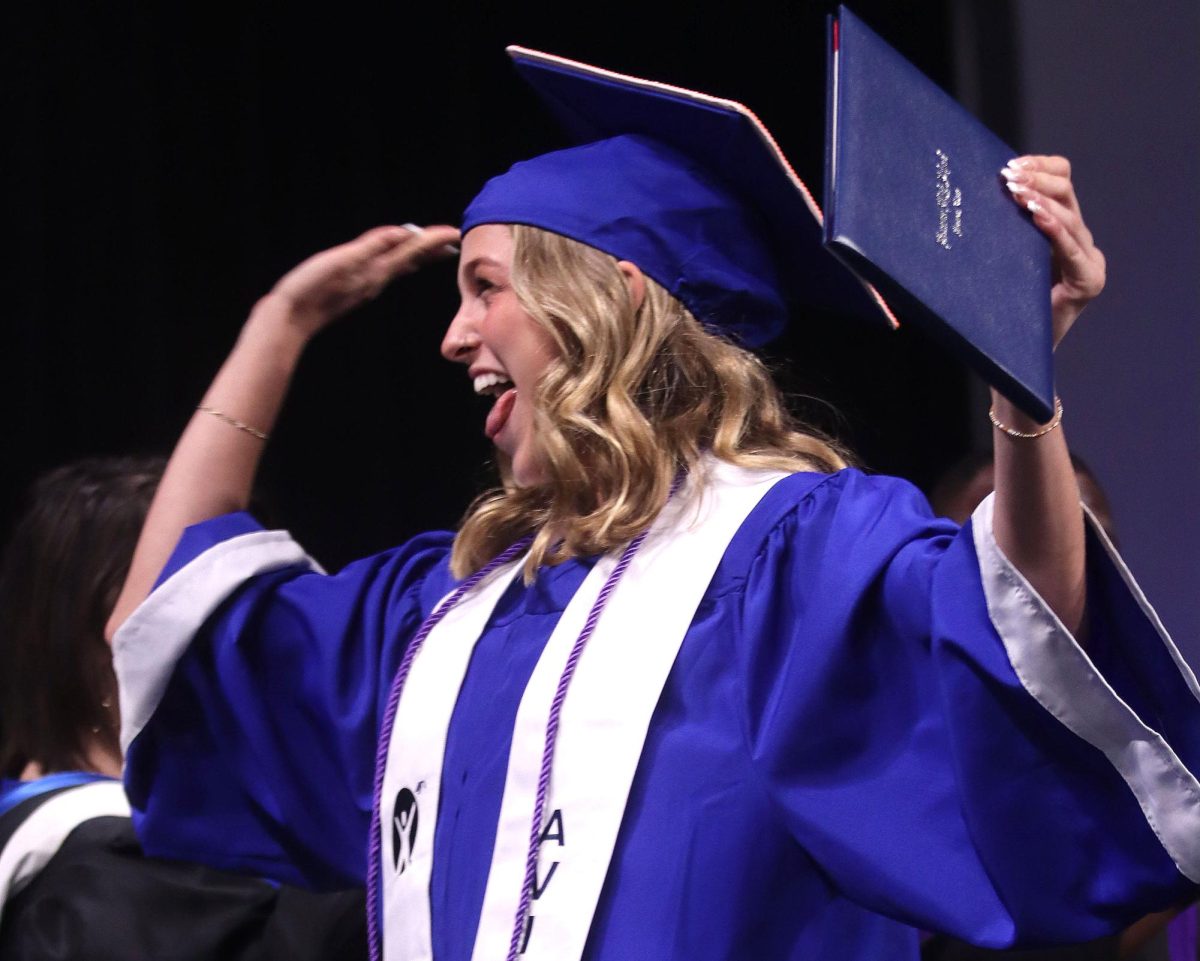A different approach to art
The unique job of an Art teacher working under the I.B. program
IB Art teacher Mrs. Cason. Mrs. Cason plans on continuing teaching IB art in the future.
February 29, 2016
A quiet room, the silence like white noise, formed by the sound of pencils working carefully on craft paper. It is broken only by the questioning of a curious student unsure of how to proceed, in need of artistic direction.
More than happy to help awaits Mrs. Chelsea Cason. Mrs. Cason teaches I.B. Art, an elective specific to the I.B. program designed to incorporate artistic technique, knowledge, and design into the student’s life, and prepare them for careers involving said skills.
“I hadn’t originally planned on specifically teaching an I.B. course,” Mrs. Cason said. “When I saw an opening for the job, it seemed interesting and in-depth, so I took it.”
Initially, Mrs. Cason was unsure of what direction to take in respect to how she taught the class. While the curriculum demands specific requirements such as that of the process portfolio and exhibitions, instruction of basic concepts and the direction of the class were left entirely up to her. In addition to this, the number of I.B. art students she would be teaching was minute, however, she was able to formulate a style of teaching that has since worked well for her, and more importantly, her students.
“ On a new day, walking in, we begin with a ‘starter’ question,” Mrs. Cason said. “Afterwards, I introduce the topic, and then we have a class discussion where students talk about what the topic means to them personally, and how it is relevant world-wide. Then, they go on to individual research, and the rest is up to them. I’m there if they need anything.”
According to Mrs. Cason, the progression of the course, depending on whether you take it as a high-level or a standard level course, varies considerably from that of her other art classes.
“Unlike my other classes, I.B. Art’s teaching and grading components are very vague,” Mrs. Cason said. “Other art classes, like my Drawing classes, are graded based on daily work and finished weekly products. I.B. Art, however, is graded and “tested” over a span of months, or even years if you take High-Level, as you build up your skill over the years and present products like your Process Portfolio that demonstrate consistent progression and advancement spanning over a long amount of time.”
Apparently, the type of work that I.B. Art students must complete with Mrs. Cason’s guidance is diverse, and extensive.
“Students have to submit Studio pieces (their finished products) throughout the year while meeting Texas TEKS requirements, like 200 word descriptions of each piece, and their Curatorial Rationale; explanations of the purpose and title,” Mrs. Cason said. “Like I mentioned before, they must also build up their Process Portfolio over the school year, while also working on their projects (currently, our Comparative Study). It’s my job to aid in their progression over the year(s) and help them assess how they have grown and how they can continue to improve in my class and after they graduate.”
Mrs. Cason plans to continue teaching I.B. Art, and hopes that her role as a teacher and the work she does will provide students with a passion and better understanding of Art after they graduate.
“I hope that my students will walk away with a better appreciation for art, and the role that it plays in different cultures around the world,” Mrs. Cason said. “I also hope that they will walk away with a better sense of themselves’; who they are as people, and who they are artistically. That is the goal for I.B. Art and the I.B. Program as a whole.”







